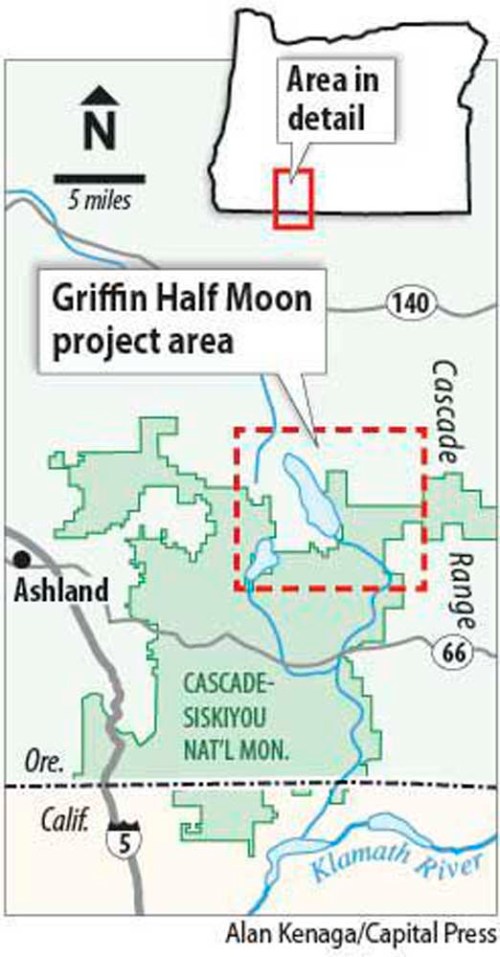Lawsuit against logging project cites impact on fishers, owls
Published 9:00 am Saturday, January 11, 2020

- Griffin Half Moon vegetation project
KLAMATH FALLS — A 933-acre logging project on U.S. Bureau of Land Management property in Southern Oregon is accused of violating federal law by environmentalists who seek to overturn its authorization.
Several environmental plaintiffs — Klamath-Siskiyou Wildlands Center, Oregon Wild, Cascadia Wildlands and Soda Mountain Wilderness Council — have filed a lawsuit claiming that BLM failed to fully analyze the Griffin Half Moon project’s impacts on great gray owls and Pacific fishers.
Trending
The complaint alleges the at-risk species will be harmed by logging but the “direct, indirect and cumulative effects” of the project weren’t considered by BLM, contrary to the National Environmental Policy Act, which means the project’s approval should be vacated and any harvest operations blocked.
The project, which is adjacent to the Cascade-Siskiyou National Monument, aims to generate about 9 million board-feet of timber through thinning as well as clear-cutting under which stands would retain roughly 10-20% of their canopy.
The planned timber sale area is used by four known Pacific fishers, which are members of the same carnivorous mammal family as weasels that depend on “dense canopy closure,” according to the complaint.
“Under all action alternatives, timber harvest would reduce canopy cover on 410 acres to the point where the remaining habitat, if any, would no longer support use by Pacific fisher for its life history activities,” the environmental plaintiffs claim.
The species is proposed for a “threatened” listing under the Endangered Species Act, primarily due to the “habitat loss and fragmentation” from vegetation management in the region, but receives no mandatory protections under the Griffin Half Moon project plan, the complaint said.
“BLM did not take a hard look at excluding timber harvest from occupied Pacific fisher habitat,” the plaintiffs claim. “BLM did not monitor Pacific fisher presence in the planning area to determine if species management objectives are being met.”
Trending
Similarly, great gray owls require “older forest stands with larger trees,” where they can find hunting perches and nest sites built by other birds, the plaintiffs said. The project area is “perhaps the best known population” of the species in Oregon and a “crucial link” between its populations to the north and south.
The project area has five great gray owl nests documented by the Rogue Valley Audubon Society, but the species also won’t receive any special protection under the logging project plan, even though some of the “logging units” were excluded from harvest under the Northwest Forest Plan, the complaint said.
Properties owned by BLM in the region were withdrawn from the Northwest Forest Plan in 2016 when the agency enacted a new resource management plan for 2.4 million acres in the area, which means the owls are no longer part of a “survey and manage” program, the complaint said.
“BLM did not incorporate best management practices, standard operating procedures, conservation measures, and design criteria to mitigate specific threats to great gray owls as required by BLM policy,” according to the plaintiffs.
A spokesperson for the BLM’s Medford District, which approved the project, said the agency doesn’t comment on pending litigation.
In its record of decision, the agency said the Griffin Half Moon project would rely on clear-cutting to “produce complex early-successional ecosystems” while also contributing to the amount of timber harvested from BLM land on a sustained annual level.
Clear-cutting, or “regeneration harvest,” is needed in the area because “complex early successional” forest stands make up only 2% of the harvestable land base in the region, while the vast majority of the area is comprised of older forest stages, the agency said.









